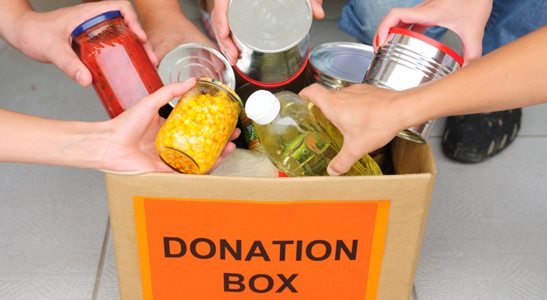Last week, the U.S. Census Bureau released new data showing the official poverty rate had its largest one-year decline since 1968. The U.S. poverty rate fell from 14.8 percent to 13.5 percent. In Arizona, the official poverty rate is now 17.4 percent, down from 18.2 percent the previous year. The child poverty rate is 24.7 percent, down from 25.6 percent.
Still, despite the decrease in poverty, more than 1 in 5 households with children in Arizona reported that they struggled to afford enough food, according to a new report released Tuesday by the Food Research & Action Center (FRAC).
Arizona ranked 15 out of 49 states and the District of Columbia, with 22 percent of households with children in 2014-2015 reporting they were unable to afford enough food.
Tucson ranked 6th out of 100 with a food hardship rate of 26.5 percent for households with children in 2014-2015.
Phoenix-Mesa-Scottsdale ranked 63rd out of 100 with a food hardship rate of 18.4 percent for households with children in 2014-2015.
Food Hardship in America: Households with Children Especially Hard Hit provides data on food hardship — the inability to afford enough food — for the nation, every state, and 100 of the country’s largest metropolitan areas, including Tucson and the Phoenix-Mesa-Scottsdale metropolitan area.
A separate study by Feeding America found that Apache County children had the least reliable access to healthy food in the nation in 2014, when 41.5 percent of children in the county were deemed to be “food insecure.”
Nationally, the food hardship rate for households with children (19.2 percent) was substantially higher than the food hardship rate for households without children (14.2 percent).
“Too many children across our state, and the nation, are missing out on the nutrition they need for their healthy growth and development,” said Angie Rodgers, president and CEO of the Association of Arizona Food Banks “This is unacceptable when there are solutions to end hunger now.”
Research shows that participation in federal nutrition programs, such as the Special Supplemental Nutrition Program for Women, Infants and Children (WIC), the Supplemental Nutrition Assistance Program (SNAP), and meals provided during child care, school, afterschool, and summer mitigates hunger and supports children’s health and learning. Data released by the U.S. Census Bureau last week found that SNAP and the National School Lunch Program lifted a combined 5.8 million people nationally, including nearly 3 million children, out of poverty.
“We urge Congress to do right by their constituents and protect and strengthen federal nutrition programs,” said Cynthia Zwick, Executive Director of the Arizona Community Action Association. With political will, we can ensure all children have the nutrition they need to learn, play and grow.”
Food Hardship in America: Households with Children Especially Hard Hit contains data throughout 2014 and 2015 for 49 states and 100 of the country’s largest metropolitan areas (MSAs). The data were gathered as part of the Gallup-Healthways Well-Being Index survey, which has been interviewing hundreds of households annually since January 2008. FRAC has analyzed responses to the question: “Have there been times in the past 12 months when you did not have enough money to buy food that you or your family needed?” A “yes” answer to this question is considered to signal that the household experienced food hardship.




